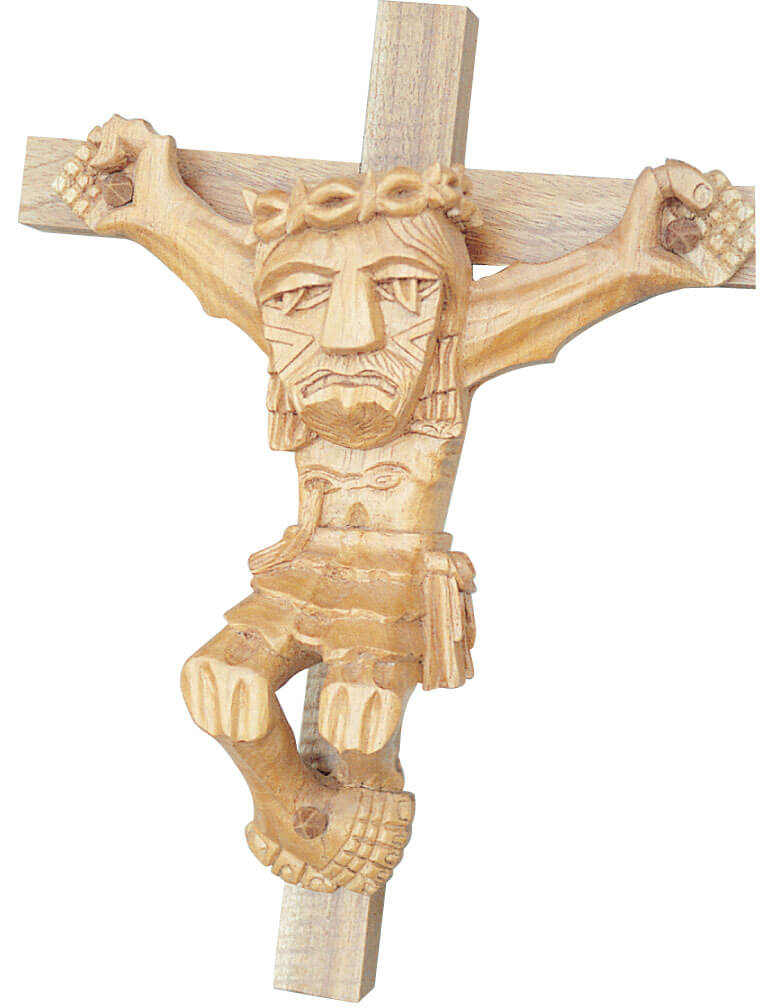Jesus identifies himself with the poor of every kind and makes active love toward them the condition for entering his kingdom.
Catechism of the Catholic Church #544
Christology is an area of study. Just as biology studies life forms and psychology studies the human psyche or spirit, christology studies Jesus, who is the Christ. The title Christ means the anointed one or messiah. To think about christology is to reflect on the meaning of Jesus Christ for the human race and human history.
The question that people think about when they study christology is one that Jesus himself asks: “Who do you say that I am?” In Mark’s gospel Peter answers, “You are the messiah” (8.29). In John’s gospel Martha answers, “You are the Christ, the Son of God, the one who is coming into the world.” These answers identify Jesus as Israel’s long-awaited messiah.
In Mark’s gospel Jesus preaches the good news of God’s nearness from village to village in Galilee; he heals the sick and frees those afflicted with addictions and compulsions.
In Matthew’s gospel Jesus begins his preaching with the sermon on the mount, proclaiming in the beatitudes that the poor, the peacemakers, the persecuted are blessed.
In Luke’s gospel Jesus is a Spirit-filled and prayerful prophet who brings the good news of a jubilee to the poor. This year the Church reads from Luke’s gospel.
In Sunday’s gospel Jesus delivers his inaugural sermon at Sabbath worship in his hometown synagogue. He opens and reads from the scroll of the prophet Isaiah; then makes the claim that he is the prophet whom the Spirit of God anoints and sends to proclaim “good news to the poor, liberty to captives, sight to the blind, release to prisoners, a year of favor from God” (Luke 4.18-19).
This passage announces Jesus’ jubilee mission. A year of favor is a jubilee year, which the Old Testament describes in Leviticus 25. The laws in this chapter require that every 50th year people restore the equality among them and stop poverty from hardening into an accepted natural state. The jubilee laws favor the poor by returning land they have sold to pay debts, by freeing those in debtors’ prison, by forgiving debts.
Luke’s gospel has a jubilee christology. It draws on Israel’s scriptures to reflect on who Jesus is, passages such as Isaiah’s. For Luke Jesus is a Spirit-filled prophet who comes to lift up the poor, heal the sick, and forgive sinners. He is a prophet mighty in word and deed (Luke 24.19), whose mission puts him in conflict with religious and government authorities.
Each gospel includes some stories about Jesus that the other gospels don’t tell. The stories unique to Luke’s gospel show Jesus’ mission to the poor, his willingness to forgive debts and sins, and his prayerfulness.
Only in Luke’s gospel is Jesus born in a stable among poor shepherds. Only in Luke’s gospel does Jesus tell the parable of the good Samaritan, a despised enemy who helps a man beaten, robbed, and left along a roadside that two temple officials, a priest and levite, pass by (10.30-37). Only Luke’s gospel tells the story of the merciful father who forgives his prodigal, youngest son and goes out to reconcile his hard-working, oldest son with his brother (15.11-32). Only in Luke does Jesus tell the parable of the fool who reaps his biggest harvest ever and build bigger barns to store his crops rather than share with the poor, then dies (12.13-21). Only Luke tells the parable of the rich man and the beggar Lazarus, who lay starving and covered with sores at the rich man’s gate. When both die, Lazarus rests in the bosom of Abraham and the rich man in torment (16.19-21).
Only Luke’s gospel tells the story of a short tax collector named Zacchaeus, who gives half his goods to the poor when Jesus stays at his house (19.1-10).
Luke stresses Jesus’ jubilee mission — his concern for people who are poor. As we hear these gospel passages in 2013, we will hear Jesus call the people of his time and the people of our time to care for the poor and change social systems that keep poor people poor.

The Hernandez family of San Lucas Toliman in Guatemala handcarved this crucifix. It presents Jesus identifying with the suffering of the poor. His face shows pain. His body is short; his hands and feet are big like those of compesinos, the peasants who work with their hands and walk most places they go. Like the Jesus of Luke’s gospel the Jesus of liberation theologies accompanies the poor in their suffering and affirms their dignity and right to justice.
